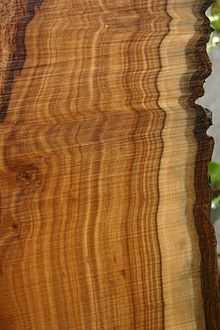Tarchonanthus camphoratus
| Tarchonanthus camphoratus | |
|---|---|
 | |
| A large, grey Camphor Tree growing in Harold Porter Botanical Garden, South Africa. | |
| Scientific classification | |
| Kingdom: | Plantae |
| (unranked): | Angiosperms |
| (unranked): | Eudicots |
| (unranked): | Asterids |
| Order: | Asterales |
| Family: | Asteraceae |
| Genus: | Tarchonanthus |
| Species: | T. camphoratus |
| Binomial name | |
| Tarchonanthus camphoratus L. | |
Tarchonanthus camphoratus (known as camphor bush for its scent, or leleshwa in Kenya), is a shrub or small tree, widespread in Africa south of the Sahel.
Description
The camphor bush can reach up to 6 meters in height. The twigs and younger stems are white-felted, as are the undersides of the leaves. The upper leaf surface is dark olive-green. Tarchonanthus camphoratus is dioecious. Flowers are usually present from December to May (in South Africa), with cream colored panicles on a discoid head. Male flowering heads have several flowers whilst the female has only a few. The fruit is a dense and woolly achene.[1]
Cultivation and uses
Tarchonanthus camphoratus wood is close-grained, attractive, durable and rich in aromatic oils. Its use as wood fuel and a source of charcoal, is an abuse of a valuable resource. It is also used as a traditional building material, in horticulture, and in tribal papermaking. Wild leleshwa is also a source [2][3] of essential oils [4][5] used as fragrances. Its leaves are used by the Maasai to scent their homes and persons.
Medicinal values


Tarchonanthus camphoratus is used as a traditional remedy for respiratory illnesses.[6] The species has wide range of local uses, including dental hygiene.
| Wikimedia Commons has media related to Tarchonanthus camphoratus. |
References
- ↑ Hilliard, O.M. Compositae in Natal. University of Natal Press, 1977. pp. 110-112.
- ↑ Young, T.P. and C. Francombe (1991). "Growth and yield estimates in natural stands of leleshwa (Tarchonanthus camphoratus)". Forest Ecology and Management 41: 309–321.
- ↑ Kennedy, A.D. (1998). "Coppicing of Tarchonanthus camphoratus (Compositae) as a source of sustainable fuel-wood production: an example from Laikipia Plateau, Kenya". African Journal of Ecology 36: 148–158.
- ↑ Mwangi, J.W., Achola, K.J. et al. (1994). "Volatile constituents of the essential oil of Tarchonanthus camphoratus L.". Journal of Essential Oil Research 6: 183–185.
- ↑ Bishay, D.W., Attia, A.A. and Fayed, M.A. (2002). "Flavones and a quaternary alkaloid from Tarchonanthus camphoratus L.". Bull. Pharm. Sci. Assiut Univ. 25(1): 1–6.
- ↑ "Tarchonantus Camphoratus Herba", Google Docs.